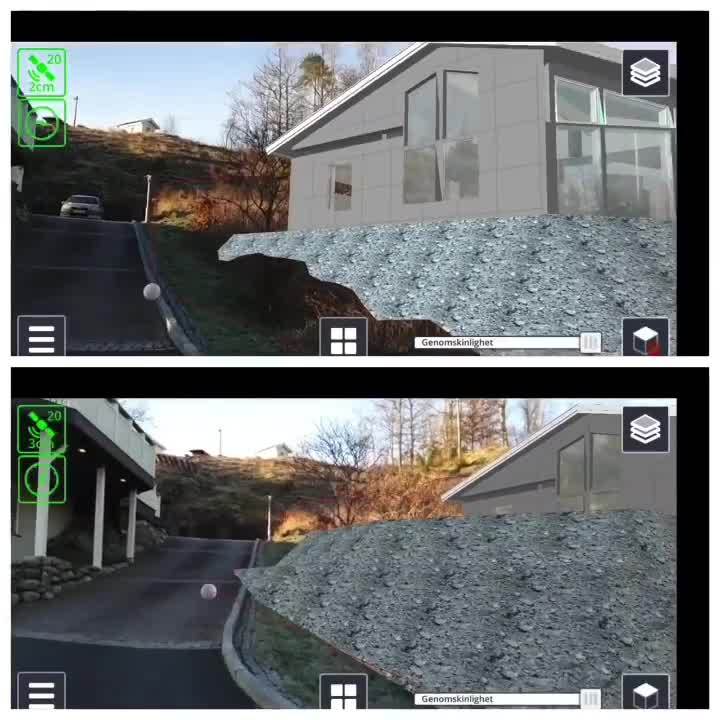Technology is a Must for a Swedish Land Excavation and Construction Company
We chatted with Fredrik Bergstrom, CEO and owner of FMT AB, a medium-sized land excavation and construction company based out of Gothenburg, Sweden. FMT AB offers innovative services in building construction with a technology-first approach. Fredrik’s forward-thinking implementation of augmented reality for small businesses has led to FMT AB landing contracts that would typically have been awarded to much larger organizations.
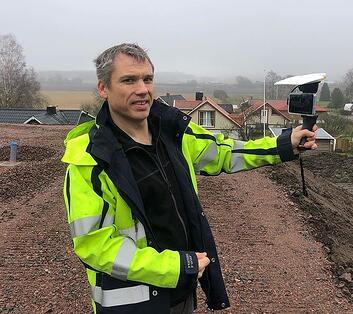
Let’s take a deeper dive into Fredrik’s experience with SiteVision and hear his perspective on the need for AR in construction—especially for small and medium-sized operators via mobile device.
Tell us a little bit about FMT AB and the kinds of customers you work with.
We have a total of 16 people, so we are a small company. Our clientele and projects vary. However, we do a lot of small housing projects for people who are going to just build their own house. An example of a big project of ours is the following: There’s a famous river channel here in Sweden that was dug by hand about 150 years ago, and it’s undergoing a significant restoration. We have been doing the drawings and the 3D visualization for the whole project. They chose us over all the big consulting companies in Sweden, and we are just a small company.
Are there a lot of small contractors like your company in Sweden?
Small contractors are quite common. A lot of contractors are only one person with one excavator. The big companies don’t own machines. They just rent machines when needed along with a pilot to drive them. That’s how it works here.
What challenges do you face because FMT is a small organization?
The problem right now is that there’s a lot of people involved in the process, and many such as the architects don’t always understand what we are doing. And that’s an issue. They don’t understand that we can use the 3D models and all of the things they are creating.
What sets your company apart?
The most unique thing about us is the usage of new technology in the construction business. Although we are a smaller company, we use all the technology that’s available to us. You can use technology even when you are just building a small house. Of course, you can also get all of this technology by working with the big consulting companies here in Sweden. But the difference is they need 20 guys, when we can manage to do the same thing with two guys. Technology is not just for big companies or big infrastructure.
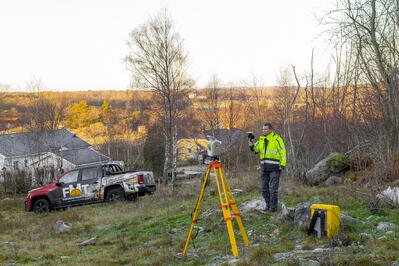 Fredrik with an SX10, Trimble SiteVision, and few other pieces of essential equipment
Fredrik with an SX10, Trimble SiteVision, and few other pieces of essential equipment
How did you discover Trimble SiteVision?
I started using SiteVision about a year and a half ago. It took a couple of months before people were able to really understand how the device could transform their drawings and 3D models. Today, we offer technology like SiteVision, HoloLens, Trimble SX10, and the scanner, which allows us to have more connections with the architects and the construction crew.
Tell us about your earliest experiments with Trimble’s AR technology in the construction industry.
I started with a small housing project. I made a cube for the house and roof, and then I took the PDF drawings, just black and white and I simply projected the drawings on the walls. But we didn’t have doors, we didn’t have windows. It was just a cube. So the modeling in that case took me about fifteen minutes.
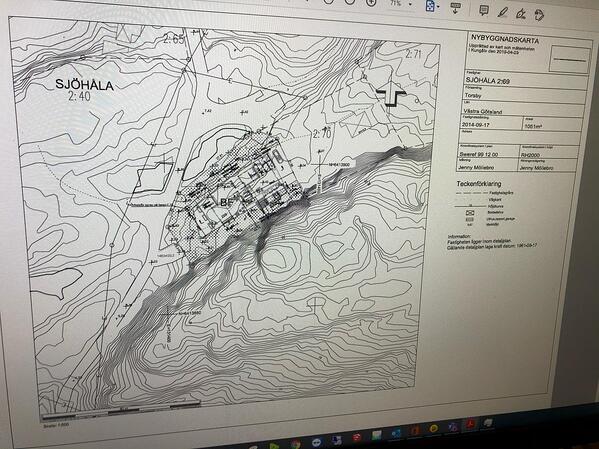
So that very first attempt at visualization was really easy?
It was. I’m not good at this stuff at all, but I’ve realized that these things aren’t so hard to learn. SiteVision is advanced technology, but it’s easy to learn. SketchUp is the same, it’s advanced but it’s easy to learn. So, just put it together.
I mean, showing all the details of the model is important if you are going to sell a huge project with some famous architect. You have to have high rendered pictures and things like that. But in the construction business, that’s not the focus. You need to know, does it fit? Do we have any problems with this? How will it look for the surroundings? So you don’t have to be an artist to do great stuff with SiteVision and that’s one of the things I noticed that’s really, really great.
How has SiteVision been able to help you with communicating with architects in the early stages of construction? Are you able to show them SiteVision and what you could do with models?
We can. I would say we’re filling the gap between the architects, the people in the office, and the people in the field. There’s a big gap between those who are creating the drawings and the guys who are building in the field. And I would like to say that tools like SiteVision and the people who know how to use such technologies are going to fill that gap.
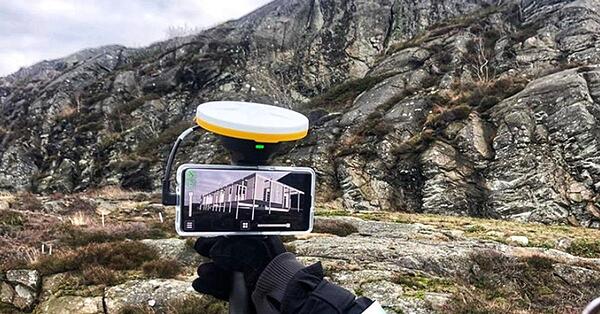
You’ve had experience with SiteVision, and now you have a bit of a relationship with architects, and you know how to talk with them. Do you feel like you are more prepared because you understand 3D models and augmented models and GPS?
Yes. I feel like I have a really big advantage in those cases because, as you said, I know how to use all of this stuff, and I can see the complete product from the drawings to the field when it’s finished.
Has SiteVision improved customer communication in construction projects?
SiteVision is helping us connect to our customers better because, with SiteVision, we can sit down and understand and communicate effectively with each other. Sometimes, I’m telling the customer something won’t work, or if they’re telling me about their vision of how they want something to look. When we make a 3D model and show them how much a project costs, then customers can really see what we are going to do for that amount of money.
“Today our customers are choosing us for projects, not because of the price, but because we can show what we are going to deliver.” –Fredrik
This wasn’t the case a year and a half ago. Back then, if one of my competitors told the customer they could do a similar job, but cheaper, then they would get the contract. Today that’s not the case because I have the advantage of using 3D modeling and showing my customers in the real world what we can deliver for a certain amount of money.
It seems SiteVision brings you and your customer to the same level, so in your words, what is the value of augmented reality for customer communication?
It clarifies expectations. We have the chance to solve and avoid problems before we start the project. For example, if I tell someone who’s building their own house that it will cost about fifty thousand dollars, and they don’t have the budget, I can say that we have to do something else.
And I can see that all of our projects are much easier. I don’t have economic discussions at the end of our project because we’ve been discussing money since the start along with what we are going to deliver and how it will look. Just today, we got the as-builts of some finished projects where I can make comparisons between our 3D models, rendered pictures, and the finished product. Of course, it looks the same, and that’s quite nice. It’s really fun to see.
The same model in two different locations
What customer value does Trimble SiteVision bring to your smaller projects?
The greatest thing about small housing projects is when people see their own house outside, on-site, with SiteVision, or hanging above a table with HoloLens. People get this smile, and I love that. With SiteVision, you look at things more holistically, like does it work with the surroundings? Today our customers are choosing us for projects and that’s not because of the price, they are choosing us because we can show what we are going to deliver.
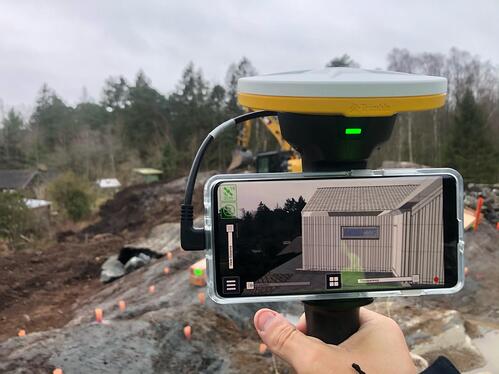 Showing client deliverables with SiteVision
Showing client deliverables with SiteVision
We hear from other “early adopters” that collaboration via an AR mobile device saves time and saves money. If you had to summarize your experience with SiteVision so far, what would you say?
It’s been great. At first, my intention with SiteVision was just putting a house or something on the ground. I remember the first time I managed to do this and how cool that was. From that day on, we changed some workflows. Suddenly, we could use all of our 3D models and show them to our customers.
What is one of your favorite SiteVision features?
The ability to use SketchUp files and models with textures in SiteVision is by far the best thing.
Because of SiteVision, we started using SketchUp more because it allowed us to present more easily onsite. Then there’s the 3D Warehouse which I use when I need a demo model
Are you looking into any other new technologies at the moment?
I have a big interest in new technologies, of course. And because I’m a contractor myself, I have the opportunities to see what could be helpful for me and my customers. Right now, the biggest thing is how do you present data? How do you use it? It’s not just collecting data, because everybody can do that. It’s about how you use and present it. Everything is about presenting the data and workflows for the customer.
And getting the customer to get more value. That’s also a really, really big thing because if you fly with a drone, or use a scanner in about an hour, you can get about a hundred thousand square meters in 3D with really good accurate data, in one hour. And often when we do that, we just use this data to get a cut fill map to our customer and they get this on a drawing.
How fast is technology advancing in your industry?
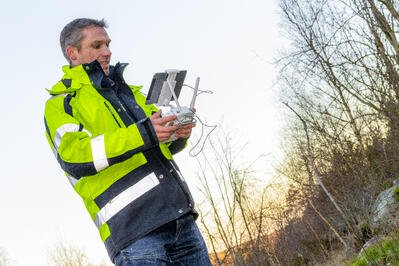
Let me say it like this… a year ago, it was not common. If someone made a post on LinkedIn or Facebook with a big point cloud or anything cool in 3D, it was very novel. Now 12 months later, you have so many people posting point clouds; well, you have almost a whole country in 3D point clouds.
Today, it’s not about data collection. Everybody can buy a drone. Everybody can work with photogrammetry, everybody can use a great scanner from Trimble, and you can get all of this cool stuff in your computer. So everybody can do that. And then we have this great data in our computers and no one’s using it. Everybody should be able to use the data, and that’s what I’m aiming for. How can we get the most usage for the most people for this?
How do you think SiteVision and augmented reality is going to transform the construction industry—especially for small to medium companies?
With augmented reality, we have the ability to solve a problem before it occurs, and we can see things onsite before they exist. It also saves time. Three hours meeting in an office looking at a 3D model and comparing it with the data from a drone and then an hour on site with SiteVision. Technology is giving us the opportunity to do all necessary work back in the office and is helping us not do the wrong thing. So… it will change the industry totally.
Fredrik was one of the first SiteVision users. To read more first-hand experiences with augmented reality and land excavation, check out The Augmented Reality Experience for a Land Excavation and Construction Company.

More Trimble SiteVision
Subscribe to the Trimble SiteVision blog so you'll be alerted with the latest posts.


